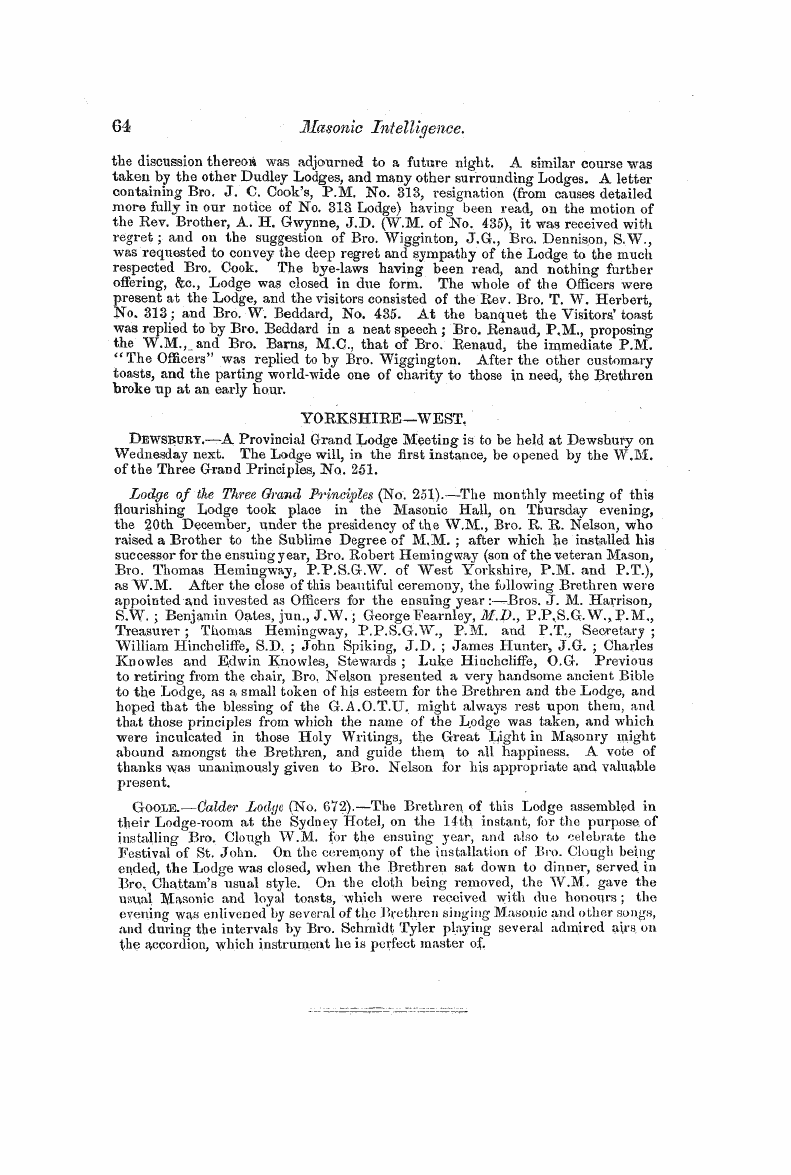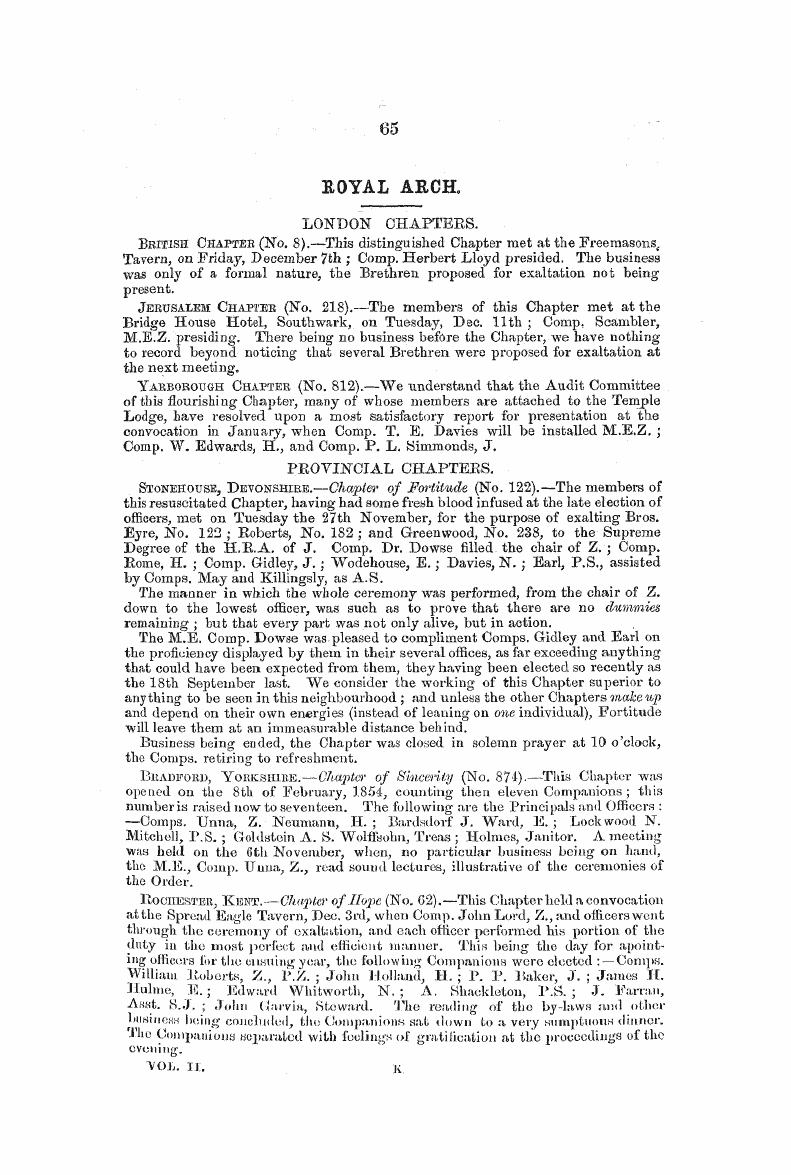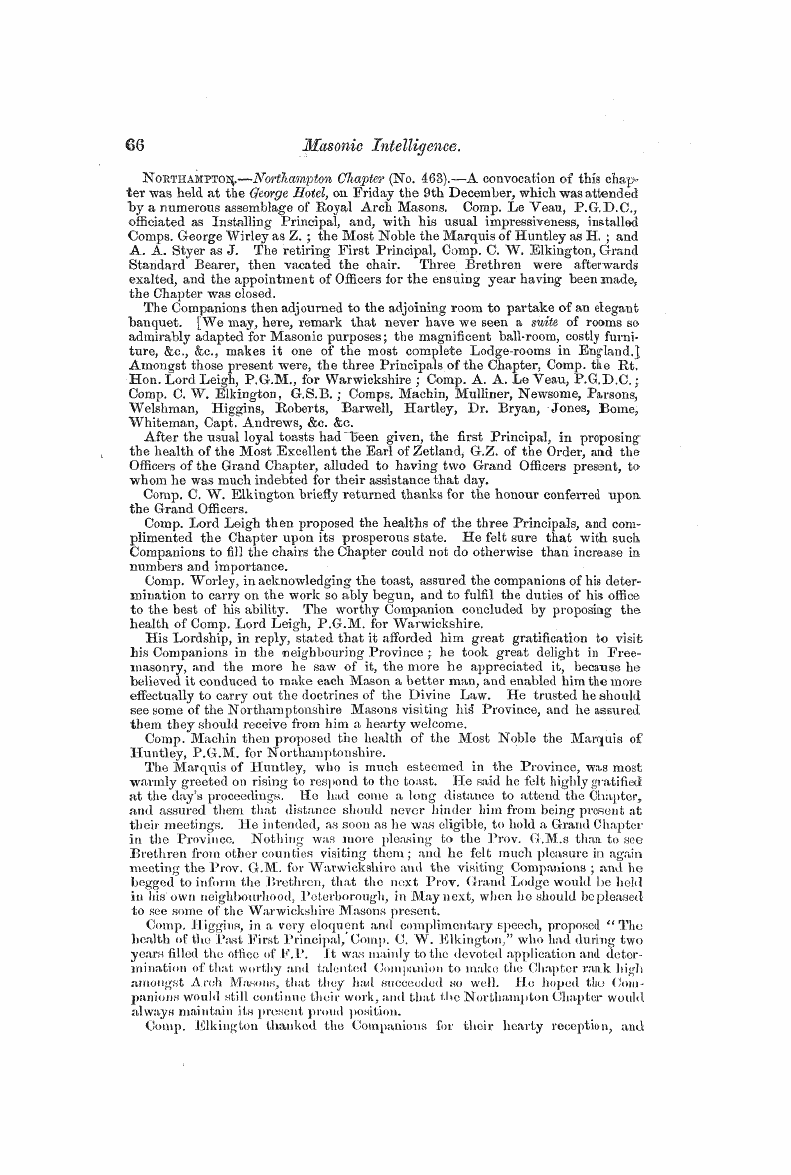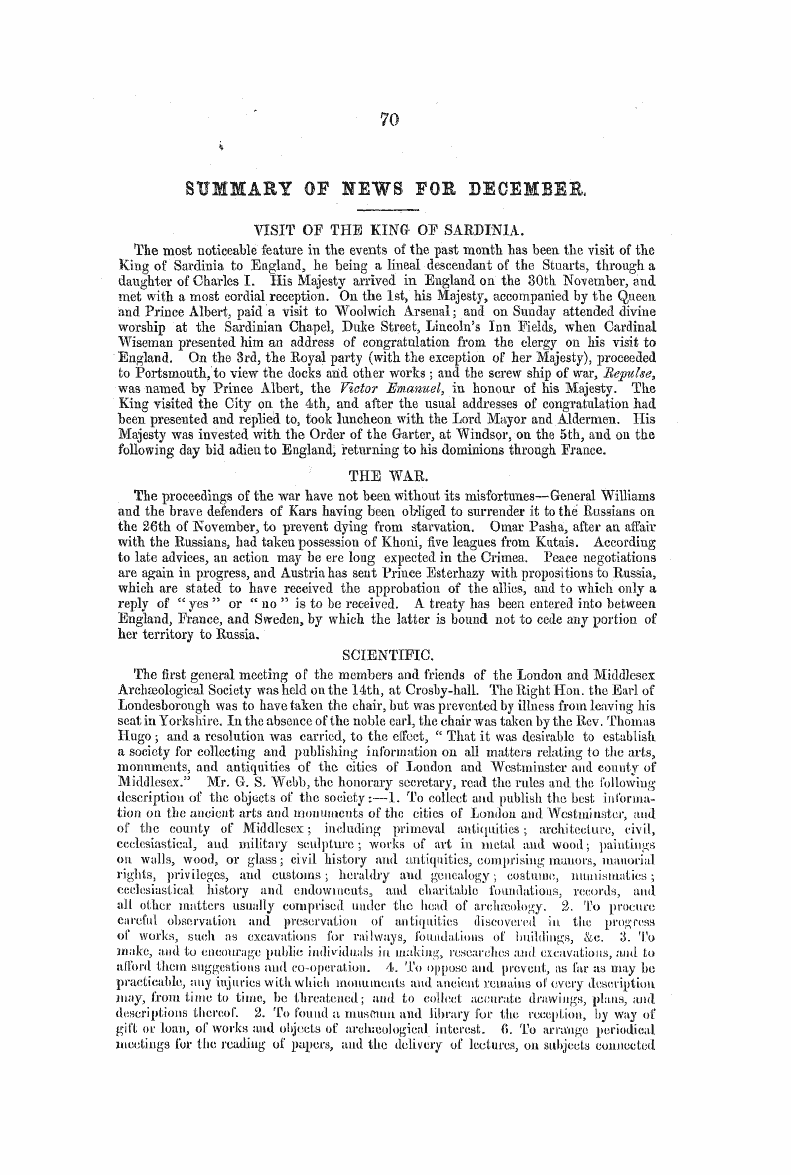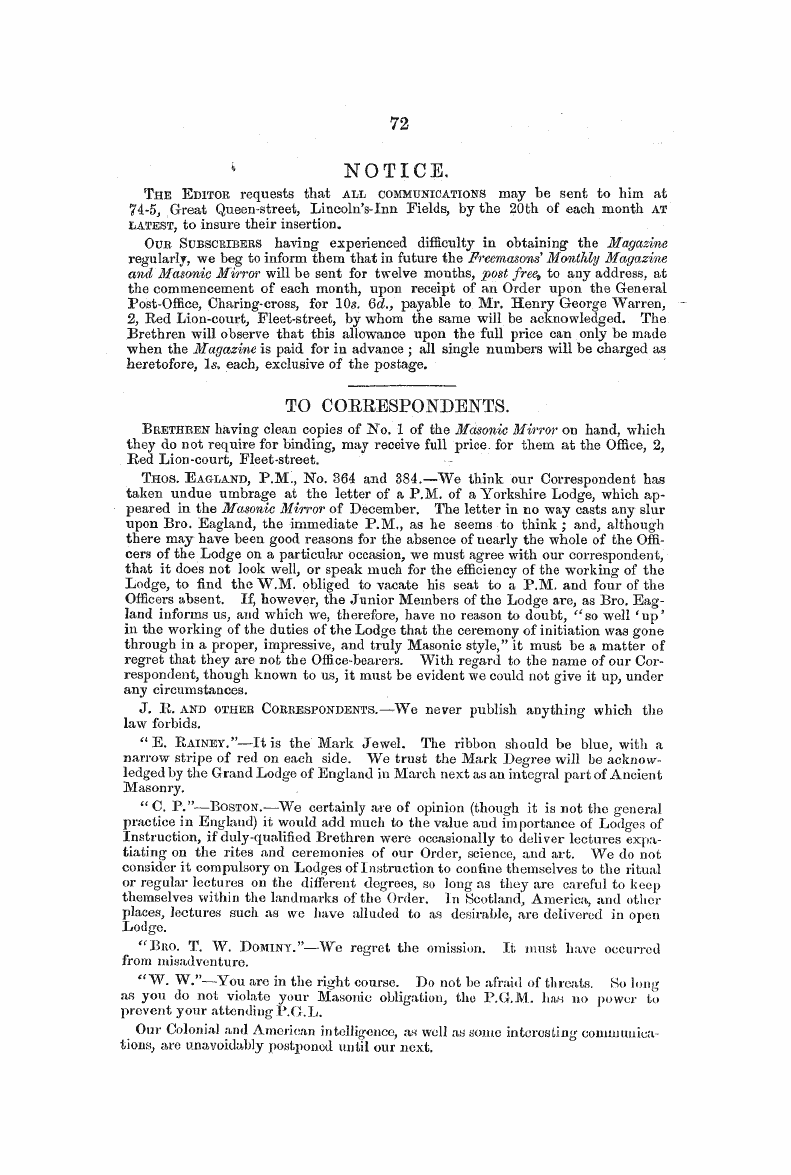-
Articles/Ads
Article VOICES EEOM DEAD NATIONS. BY KENNETH R. ... ← Page 2 of 7 →
Note: This text has been automatically extracted via Optical Character Recognition (OCR) software.
Voices Eeom Dead Nations. By Kenneth R. ...
Till the rising < pf the sun , or of some star , could be accurately predicted , as to time and place , there was no astronomical science . Its whole progress since has been by introducing more and more certainty and precision into its predictions , and by using smaller and smaller data from direct observation for a more and more distant prevision . "
But such a process could not from its very nature proceed quickly ; after the great fact of the attainment of a measure for time—a desire which such a mind as the Egyptian would crave and eagerly and rapidly , not to say necessarily satisfy—research began to move more slowly .
In the Alexandrian era supernatural views of astronomy began to prevail , whether for the first time it matters not ; the development of the theory of probabilities gave a fulcrum to false as well as true science ; planetary motions seemed guided by other than
physical laws , mythologers lent a hand : and astrology sprang full armed from the noddles of the inventors—parturmnt monies nascettcr ridiculus must By these speculations were the mysteries of the later Hellenic times revived ; thus , at any rate , was cyclical calculation adopted .
However we cannot go astray for ever . The yet unpublished discoveries of M . Mariette within the last four years are quite single of their kind , and most important for the appreciation of the commonsense history of Egypt . Among their most valuable , results is the discovery that these confusing cycles of years—the Apis cycle certainly ( and if one be false we may be sure that the rest are doubtful )
were thus inventions of the later Greco-Egyptians , and unknowm to the original nation . The fact of the large number of Apis graves existing in the Serapeum , not known to Lepsius when he formed his published opinion upon the cycle of Apis ( twenty-five years—309 lunar months ) , upsets the arrangement which he adopted , while it does not detract from his real and multitudinous services . The
names of Lepsius , De lionge , and Birch , must always stand first in Egyptological science , after its father , Champollion , —and while it does not detract from his valuable services , the eminence of the example is the more instructive from its being likely to become better known than any other .
We are thus warned from , the abyss of astronomical cycles : we find that the boasted astronomical science attributed to the Egyptians is in reality late Greek ; and from how much of peril is ancient history released by such a consideration ! These bulls , in . number sixty-four , extend from the times of Ramses II . to those of the Ptolemies ; and the dates of their deaths are inscribed upon their toinbs . t Even the
* The chain of monuments at present existing refers the cruder parts of the system of astrology to Chahhea and the Babylonian times in a manner not to bo disputed . Put the system I am here referring to , was pei footed by Porphyry and his contemporaries . See the Tetrabiblos of Ptolemy for the best account of it . •\ See Marietto , Bulletin Arch 6 ologi < jue de FAthuiueuiu Pnineais , Mai , 1855 , p . 45 .
Note: This text has been automatically extracted via Optical Character Recognition (OCR) software.
Voices Eeom Dead Nations. By Kenneth R. ...
Till the rising < pf the sun , or of some star , could be accurately predicted , as to time and place , there was no astronomical science . Its whole progress since has been by introducing more and more certainty and precision into its predictions , and by using smaller and smaller data from direct observation for a more and more distant prevision . "
But such a process could not from its very nature proceed quickly ; after the great fact of the attainment of a measure for time—a desire which such a mind as the Egyptian would crave and eagerly and rapidly , not to say necessarily satisfy—research began to move more slowly .
In the Alexandrian era supernatural views of astronomy began to prevail , whether for the first time it matters not ; the development of the theory of probabilities gave a fulcrum to false as well as true science ; planetary motions seemed guided by other than
physical laws , mythologers lent a hand : and astrology sprang full armed from the noddles of the inventors—parturmnt monies nascettcr ridiculus must By these speculations were the mysteries of the later Hellenic times revived ; thus , at any rate , was cyclical calculation adopted .
However we cannot go astray for ever . The yet unpublished discoveries of M . Mariette within the last four years are quite single of their kind , and most important for the appreciation of the commonsense history of Egypt . Among their most valuable , results is the discovery that these confusing cycles of years—the Apis cycle certainly ( and if one be false we may be sure that the rest are doubtful )
were thus inventions of the later Greco-Egyptians , and unknowm to the original nation . The fact of the large number of Apis graves existing in the Serapeum , not known to Lepsius when he formed his published opinion upon the cycle of Apis ( twenty-five years—309 lunar months ) , upsets the arrangement which he adopted , while it does not detract from his real and multitudinous services . The
names of Lepsius , De lionge , and Birch , must always stand first in Egyptological science , after its father , Champollion , —and while it does not detract from his valuable services , the eminence of the example is the more instructive from its being likely to become better known than any other .
We are thus warned from , the abyss of astronomical cycles : we find that the boasted astronomical science attributed to the Egyptians is in reality late Greek ; and from how much of peril is ancient history released by such a consideration ! These bulls , in . number sixty-four , extend from the times of Ramses II . to those of the Ptolemies ; and the dates of their deaths are inscribed upon their toinbs . t Even the
* The chain of monuments at present existing refers the cruder parts of the system of astrology to Chahhea and the Babylonian times in a manner not to bo disputed . Put the system I am here referring to , was pei footed by Porphyry and his contemporaries . See the Tetrabiblos of Ptolemy for the best account of it . •\ See Marietto , Bulletin Arch 6 ologi < jue de FAthuiueuiu Pnineais , Mai , 1855 , p . 45 .































































